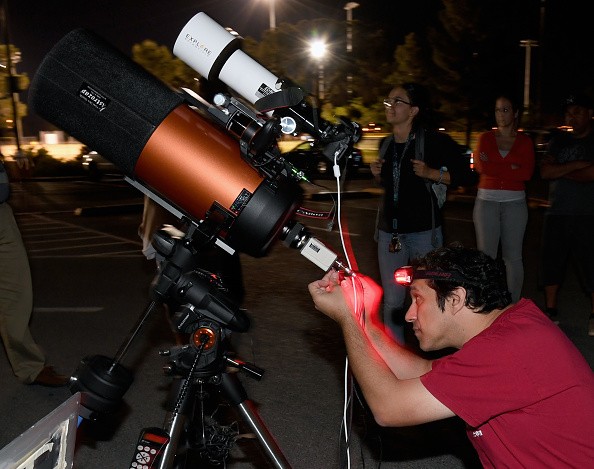On May 27, a massive asteroid estimated to be ten times the height of the Statue of Liberty will make a near but safe visit to our planet.

At 10:26 a.m., the asteroid 7335 (1989 JA) is expected to pass within 2.5 million miles of the Earth. NASA's Center for Near Earth Studies (CNEOS) data showed that it was 0:27 a.m. ET on May 27.
Quick Fly By
The space rock will be zipping by our globe at a remarkable speed of roughly 47,200 miles per hour. While this approach is near by astronomical standards, it is not by practical means, and the asteroid, which was discovered in May 1989 by astronomer Eleanor "Glo" Helin at the Palomar Observatory in California, poses no threat to the Earth.
"This object's orbit and future locations are extremely well established," Don Yeomans, a retired NASA planetary scientist, told Newsweek. "The expected Earth near approach distance on May 27 is also the least feasible close approach on this day."
A Particularly Large Asteroid

The space rock is one of around 29,000 near-Earth objects (NEOs) found by astronomers, the vast majority of which are asteroids. Any celestial entity passing within 30 million miles of our planet's orbit is a comet.
Given their predicted sizes and orbits, more than 2,200 of these NEOs, including 7335 (1989 JA), are presently classed as "Potentially Hazardous."
According to CNEOS director Paul Chodas, the Potentially Hazardous designation merely indicates that over many hundreds and millennia, the orbits of such objects may change into ones that have a possibility of colliding with the Earth.
Chodas, however, said that none of the known Potentially Hazardous NEOs have a chance of colliding with the Earth in the next century or so, while longer-term hazards remain unknown.
"Thus, while [7335 (1989 JA)] can travel close enough to Earth and is bright (i.e., massive) enough to qualify as a potentially dangerous asteroid," Yeomans explained, "it is not even a distant threat on May 27."
As far as near-Earth asteroids go, 7335 (1989 JA) is "quite huge," according to CNEOS statistics, with a diameter of roughly 1.8 kilometers (5,900 feet). However, determining the size of asteroids in space is difficult, and alternatively, lesser estimates for the asteroid's size exist.
"It's tough to estimate the sizes of faraway objects in space," Greg Brown, an astronomer at the Royal Observatory Greenwich in the United Kingdom said. "Because we frequently can't see how large it is physically-they often seem as unresolved dots in telescopes-astronomers are left to guess how big it is based on how brilliant it looks."
Visibility
"The bigger it is, the more light it will reflect, making it appear brighter," he explained. "However, this necessitates an assumption about how reflective the material it is composed of, which may vary substantially. When you add in a few additional problems, the real size of an item can be very different from the estimated value."
The CNEOS database value for the size of 7335 (1989 JA) appears to be based on a measurement given in a 1994 investigation. According to more recent studies, the asteroid's diameter is around 1 kilometer (3,280 ft).
While 1.8 kilometers is within the range of plausibility for the diameter of this asteroid, Alan Harris, a NASA expert on near-Earth asteroids, told Newsweek that the space rock is likely to be smaller-closer to 1 kilometer wide.
For more Space news, don't forget to follow Nature World News!
© 2025 NatureWorldNews.com All rights reserved. Do not reproduce without permission.





